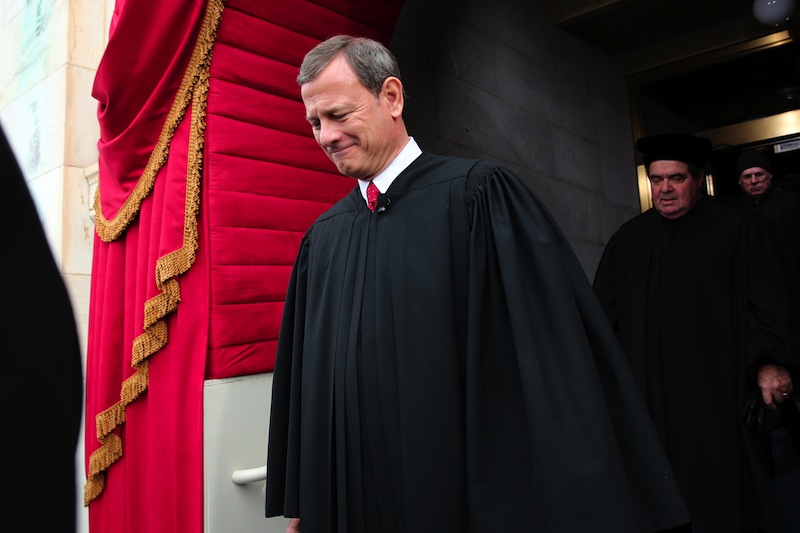Last term, the Chamber of Commerce was undefeated — it won every Supreme Court case it weighed in on. So far this term, it has secured favorable rulings in 6 out of 7 cases.
The modern Supreme Court under Chief Justice John Roberts is the most corporate-friendly in generations, according to a new study by the Constitutional Accountability Center, a liberal legal advocacy and research group which studied the court participation and success of the Chamber of Commerce, the behemoth lobbying group for business interests, in recent decades.
The basic trend that CAC found was a dramatic pro-corporate tilt since the 1980s. Under Chief Justice Warren Burger from 1981-1986, the Court sided with the Chamber of Commerce 43 percent of the time. That number rose to 56 percent from 1994-2005 under Chief Justice William Rehnquist, and to 69 percent from 2006-2013 under Roberts.
Perhaps not coincidentally, the Chamber’s involvement in Supreme Court cases has sharply increased over the same period. It filed amicus briefs in 4 percent of cases in the early 1980s; today it’s 24 percent, according to CAC. More notably, the Chamber has in recent years written more petitions than any other private organization calling on the Court to take up cases.
“The Chamber of Commerce has definitely spearheaded the effort to shape the sort of cases that end up on the Supreme Court’s docket,” said Tom Donnelly, a lawyer at CAC and co-author of the study. “They’re doing this because they know they have a consistent bloc on the court that’s likely to vote in their interest.”
The most prominent example was Citizens United v. FEC — the 2010 case in which the Roberts Court erased longstanding precedent in a 5-4 decision that loosened the restrictions on political campaign expenditures by corporations. In addition, CAC’s Donnelly points to a series of lesser-known cases in recent years — such as Wal-Mart v. Dukes and AT&T v. Concepcion, which restricted class action litigation — that were big wins for corporate defendants.
“These cases are less sexy but they affect a lot of people,” Donnelly said. “They’ve done a lot more to make it difficult for consumer and workers to bring class action claims to hold businesses and corporations accountable for their behavior. I think that’s going to continue and I think that’s the most dangerous and important trend.”
The Chamber of Commerce did not respond to a request for comment for this article.
Jonathan Adler, a law professor at Case Western Reserve University, cautions that the premise of a pro-business Court tilt is difficult to quantify. Adler, who has written about the issue for the conservative legal blog Volokh Conspiracy, also questioned the methodology of the CAC study, arguing for instance that it treats some cases with a 4-1-4 split as a victory for the Chamber even if five justices did not side with the business lobby.
“The Chamber may have a high win rate,” Adler said in an email, “but the Chamber does not file in every case that is significant to the business community, and even if it did, the win rate alone does not tell us much unless we consider the substance of the cases.”
The Court’s apparent shift jibes with a broader national legal transformation toward conservatism over the same period. Republican presidents have since selected a majority of sitting justices and tended to choose staunch conservatives. According to a study by two law professors, the modern Supreme Court is the most conservative since the 1930s.






